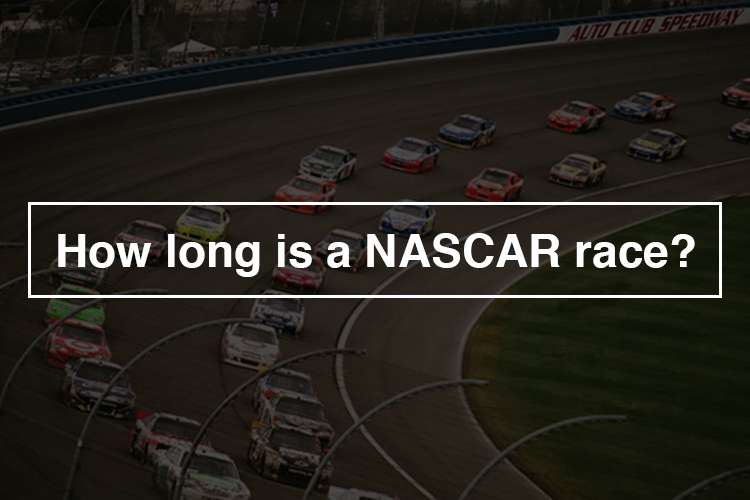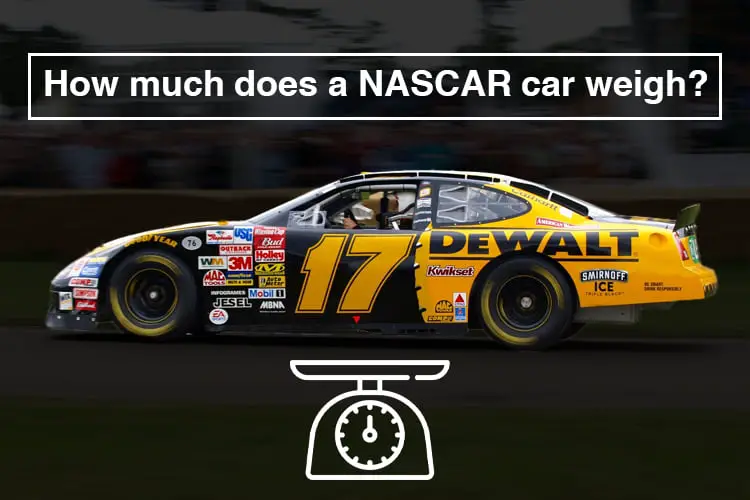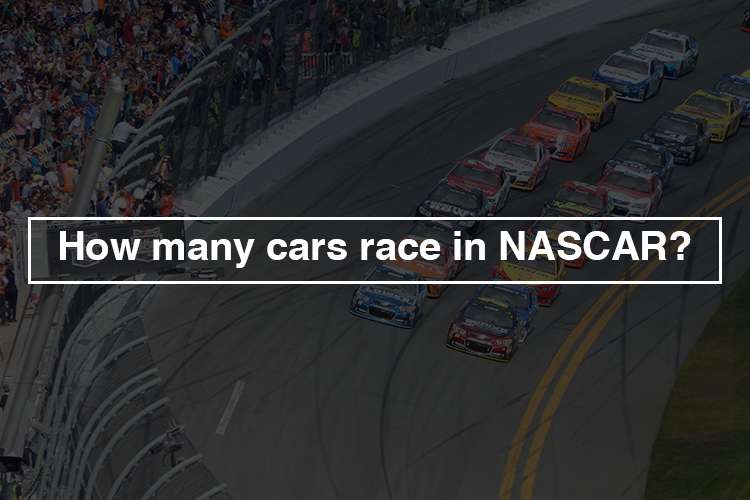Last Updated on August 29, 2023 by Pittalks
So, how many cars are in a NASCAR race?
Over the years, the number of cars in NASCAR has varied. In the 2020 Daytona 500, there were 40 cars, while before 2016, there were up to 43 cars.
Today, the NASCAR Cup Series has 40 cars in a race, with 36 charter teams and four non-charter teams.
In this article, I will cover why there has been a drop in the number of cars, why are teams still racing even after consistently losing, and some fun facts about NASCAR.
Let’s get started!
Why did the NASCAR Cup Series cut from 43 to 40 cars?
Since 1998, a full field for NASCAR has consisted of 43 cars. However, in 2016, it introduced a new charter system that would reduce that number to only 40 vehicles. 36 of the 40 would be held by the charter teams.
The number of cars was cut from 43 to 40 to discourage “start and park” drivers. These drivers turn a few laps before retiring to the garage, claiming bogus mechanical issues, cashing their cheques, and participating in the next races.
In the 2012 Daytona 500, Robby Gordon utilized a start and park strategy where he exited the race after just 25 laps, claiming that he had an “engine issue”.
The drop is not only intended to force competition but also provide a predictive revenue for teams, and ensure value for investors.
NASCAR’s attempt to reduce start and park cars and force intense competition by reducing the number of field cars and also purse changes has shown desirable results.
The competition among 6 non-charter teams
Think of the owner of charter teams as a franchise. They are offered guaranteed entry into the NASCAR Cup Series races. Owners of these teams have the right to sell their charter on the open market. They can do that once within the five years following the agreement. Compensation for charter teams gets based on:
- Guaranteed revenue
- Team’s past three season’s performance
- Points fund with a cash payout
- Race purse
The payout for the charter team is according to the position they qualify. Currently, the maximum field size for the races is 40 cars, meaning there are still spots for four non-charter teams, also known as open teams, to take the green flag.
There are six non-charter teams, and these are those teams that compete for the final four spots each week. These teams receive less money than the charter teams, usually 35% of what the charter team receives. The charter system ensures a financial incentive for owning a team. It provides a tangible value.
However, many teams are still shutting down due to the financial challenges of running a team. Fortunately, the next-gen car aims to be cost-effective, a final piece of the puzzle in the charter system.
So, how does qualifying work?
The 36 charter teams are guaranteed a spot in the race, which means there is tough competition between the six non-charter teams. In each duel race, the highest-finishing driver automatically makes it to the field. The last two spots are given to the team with the fastest qualifying speed by reverting to the time trials.
In the Daytona 500 (2018), however, there were only 40 entries. This meant that no one was sent home. In 2019, that figure dropped to 39 entries and in 2020, there were 40 entries. Only a few drivers (sometimes none) get sent home after qualifying because fewer cars are showing up in NASCAR.
What’s the situation like for chartered teams?
Chartered NASCAR teams represent the established pillars of the sport, enjoying certain privileges like guaranteed race entries and a more stable financial foundation.
This allows them to focus on refining their racing strategies, investing in top-tier equipment, and attracting experienced drivers.
Chartered teams often have a competitive edge due to their consistent presence on the grid, which contributes to their accumulated knowledge of tracks and racing conditions. This stability fosters strong fan bases and sponsorships, further solidifying their positions in the NASCAR ecosystem.
The competition among chartered teams showcases the pinnacle of NASCAR racing, where technical expertise and seasoned talent converge to deliver high-octane performances that shape the sport’s legacy.
Do all NASCAR teams have the same number of cars?
No, not all NASCAR teams have the same number of cars. The number of cars a team fields can vary based on several factors, including the team’s resources, sponsorship agreements, and strategic decisions.
While some teams might focus on a single car for a specific driver, others may run multiple cars, often with different drivers. This can provide teams with a broader presence on the track and opportunities to gather more data and insights during races.
Additionally, larger and more established teams may have the capacity to field multiple cars, while smaller or newer teams might concentrate their efforts on a single entry to optimize their performance. Ultimately, the number of cars a NASCAR team operates is a strategic choice that aligns with their goals and available resources.
About two-thirds of the 40 cars are involved in crashes every single race
During the February 2022 Daytona 500, 27 of the 40 cars got involved in crashes. Surprisingly, on that day, the race was said to have had the fewest accidents on track since 2016.
That year saw 11 cars involved in crashes, the lowest ever reported since 2016.
Over the years, the figure has dropped, with the 2019 Daytona 500 having around 37 cars involved in crashes.
NASCAR races always have plenty of wrecks. Your opponents are not the other 39 drivers, they are crashes!
Drivers who run in the 36 race season have had at least one accident on the track. In 2019, Ricky Stenhouse, Jr. had a whopping 19 accidents and yet managed to win 1st place.
40 cars attended, about 20 of them never win a race for years. Why do they keep racing?
Two words: financial incentive!
NASCAR, under the charter system, guarantees payment for all the teams that show up for the race. Whether you win or lose, you receive some of the prize money. Then there is sponsorship money too!
Even a team that constantly loses is racing on the track, and sponsors will pay good money to have their names on the cars as part of their marketing tactics.
Is 40 cars racing each race a good number, or should there be more or less?
Well, the answer isn’t as straight forward as you might expect, so let’s break down the pros and cons shall we?
Pros:
- Balanced Competition: With 40 cars on the track, there’s a substantial number of participants, allowing for a competitive field that tests drivers’ skills and strategies. This number strikes a balance between having enough cars for varied racing scenarios and preventing overcrowding on the track.
- Variety of Teams: A 40-car lineup means a diverse representation of NASCAR teams, providing exposure and opportunities for both well-established and newer teams to compete. This fosters a healthy mix of veteran and upcoming drivers.
- Manageable Logistics: Organizing and coordinating a race with 40 cars is relatively manageable in terms of logistics, including pit stops, safety measures, and race control. It ensures a smoother race experience for fans, drivers, and teams alike.
- Spectator Experience: A field of 40 cars offers an exciting spectacle for fans, both at the track and watching on television. It provides ample overtaking opportunities and engaging racing action throughout the event.
Cons:
- Limited Field Size: While 40 cars provide a competitive field, some argue that a larger grid could enhance the excitement and complexity of the race, offering more strategic options and potential for surprises.
- Reduced Track Time: With 40 cars, the available track space for each driver might be limited, potentially impacting their ability to showcase their skills and make strategic moves.
- Exclusion of Drivers: As NASCAR has a vast pool of talented drivers, a 40-car limit could mean that deserving drivers might miss out on the opportunity to participate in a race.
- Safety Concerns: A larger number of cars on the track could increase the chances of accidents and collisions, potentially leading to safety concerns for drivers and spectators.
How many cars race in NASCAR Xfinity and Camping World Truck?
Before 2013, NASCAR Xfinity had 43 cars per race, but this got reduced to a maximum of 40 in 2013. The number further declined to 38 in 2019 and 36 in 2020. Due to session cancellations because of the pandemic, in 2020, the field size was temporarily increased to 40, allowing opportunities for part-time teams to participate.
Currently, NASCAR Camping World Truck has 36 trucks racing in the series.
Comparing to CUP series, these 2 series are much more underfunded by NASCAR. Let’s see how these teams have to work to survive!
Conclusion
To please their fans, ensure competitive racing, and provide an economic opportunity for teams, NASCAR’s business model has evolved.
The guaranteed revenue and reduced number of cars are all tactics to ensure that teams continue to participate without going bust while maintaining the healthy competition that the audience craves.
Currently, the new charter system is slowly starting to show positive results. In the future, if there is a need to revisit strategy, NASCAR is not afraid to make some changes to remain relevant.
References:
- https://beyondtheflag.com/2016/02/15/nascar-field-36-cars-not-40/
- https://www.espn.in/racing/nascar/nationwide/story/_/id/8511858/nationwide-series-shrink-field-40-cars-2013
- http://motorsports-soapbox.blogspot.com/2013/03/nascar-sanctions-are-reducing-start-and.html
- https://www.orlandosentinel.com/sports/nascar/os-nascar-sprint-cup-charter-starters-0210-20160209-story.html
- https://www.usatoday.com/story/sports/nascar/2016/02/09/nascar-new-business-model-sprint-cup-team-charters/80057604/
- https://www.nascar.com/news-media/2020/05/11/nascar-expands-field-for-xfinity-gander-trucks-races-without-qualifying/
Related articles
-

How long is a NASCAR race? (In terms of miles & hours)
If you’re a new NASCAR fan, then you’re probably wondering how long the races are.
The answer depends on the track and the race, but typically they last between 2.5 and 4 hours. Of course, there’s a lot of action…Read more
-

How much does a NASCAR car weigh?
In NASCAR races, weight and speed are enemies, yet friends!
Oh, you get the “enemy” part, but why “friend”? It’s because a car with good weight distribution can get more downforce, which means…Read more

